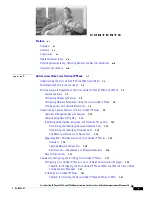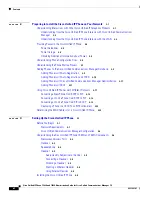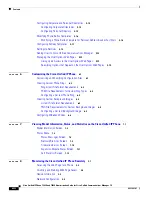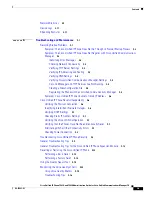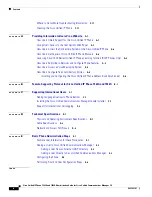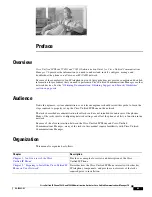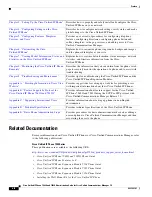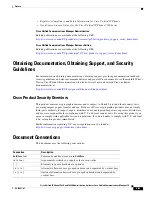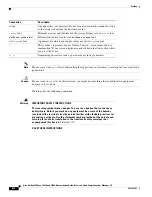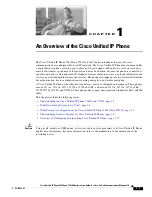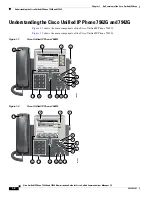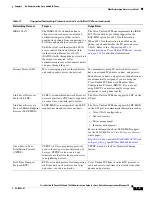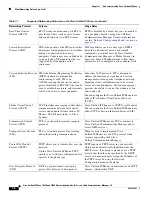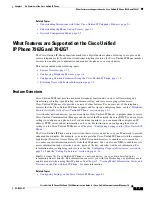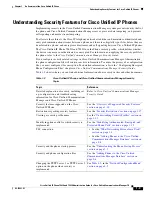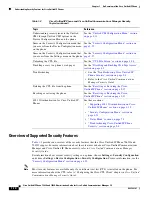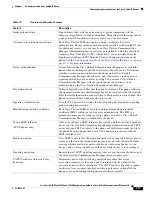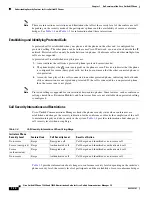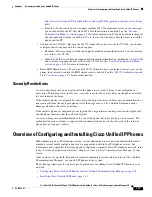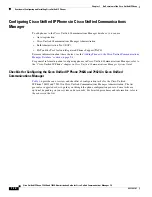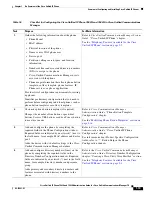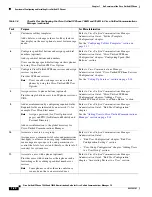
1-5
Cisco Unified IP Phone 7962G and 7942G Administration Guide for Cisco Unified Communications Manager 7.0
OL-15483-01
Chapter 1 An Overview of the Cisco Unified IP Phone
What Networking Protocols are Used?
IEEE 802.1X
The IEEE 802.1X standard defines a
client-server-based access control and
authentication protocol that restricts
unauthorized clients from connecting to a
LAN through publicly accessible ports.
Until the client is authenticated, 802.1X
access control allows only Extensible
Authentication Protocol over LAN
(EAPOL) traffic through the port to which
the client is connected. After
authentication is successful, normal traffic
can pass through the port.
The Cisco Unified IP Phone implements the IEEE
802.1X standard by providing support for the
EAP-MD5 option for 802.1X authentication.
When 802.1X authentication is enabled on the
phone, you should disable the PC port and voice
VLAN. Refer to the
“Supporting 802.1X
Authentication on Cisco Unified IP Phones” section
on page 1-15
for additional information.
Internet Protocol (IP)
IP is a messaging protocol that addresses
and sends packets across the network.
To communicate using IP, network devices must
have an assigned IP address, subnet, and gateway.
IP addresses, subnets, and gateways identifications
are automatically assigned if you are using the
Cisco Unified IP Phone with Dynamic Host
Configuration Protocol (DHCP). If you are not
using DHCP, you must manually assign these
properties to each phone locally.
Link Layer Discovery
Protocol (LLDP)
LLDP is a standardized network discovery
protocol (similar to CDP) that is supported
on some Cisco and third-party devices.
The Cisco Unified IP Phone supports LLDP on the
PC port.
Link Layer Discovery
Protocol-Media Endpoint
Devices (LLDP-MED)
LLDP-MED is an extension of the LLDP
standard developed for voice products.
The Cisco Unified IP Phone supports LLDP-MED
on the SW port to communicate information such as:
•
Voice VLAN configuration
•
Device discovery
•
Power management
•
Inventory management
For more information about LLDP-MED support,
see the
LLDP-MED and Cisco Discovery Protocol
white paper:
http://www.cisco.com/en/US/tech/tk652/tk701/tech
nologies_white_paper0900aecd804cd46d.shtml
Cisco Peer-to-Peer
Distribution Protocol
(CPPDP)
CPPDP is a Cisco proprietary protocol
used to form a peer to peer hierarchy of
devices. CPPDP is also used to copy
firmware or other files from peer devices
to neighboring devices.
CPPDP is used by the Peer Firmware Sharing
feature.
Real-Time Transport
Protocol (RTP)
RTP is a standard protocol for transporting
real-time data, such as interactive voice
and video, over data networks.
Cisco Unified IP Phones use the RTP protocol to
send and receive real-time voice traffic from other
phones and gateways.
Table 1-1
Supported Networking Protocols on the Cisco Unified IP Phone (continued)
Networking Protocol
Purpose
Usage Notes

